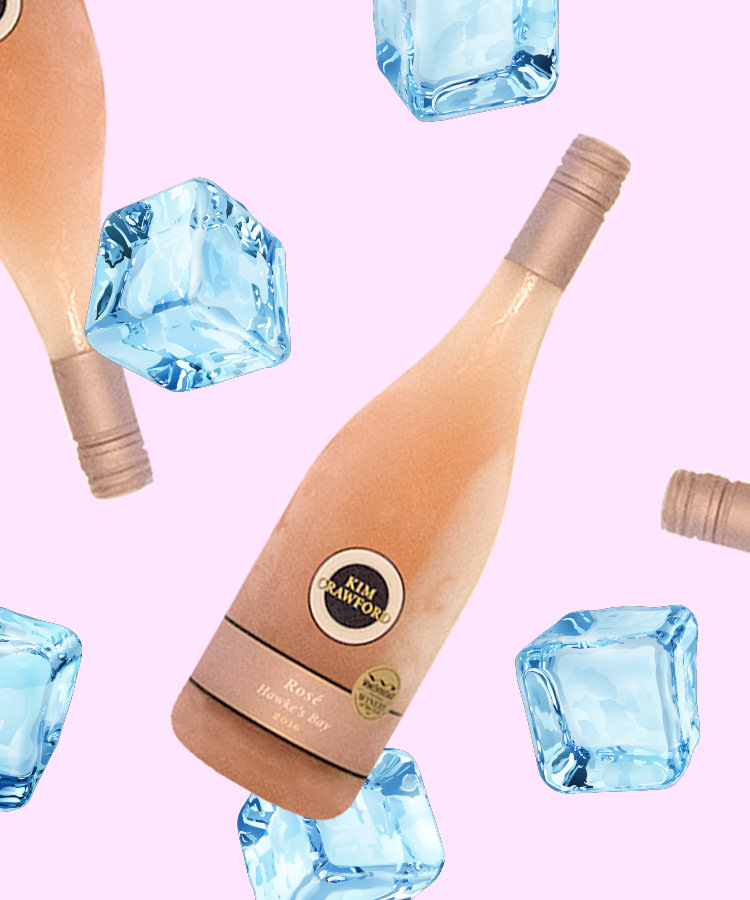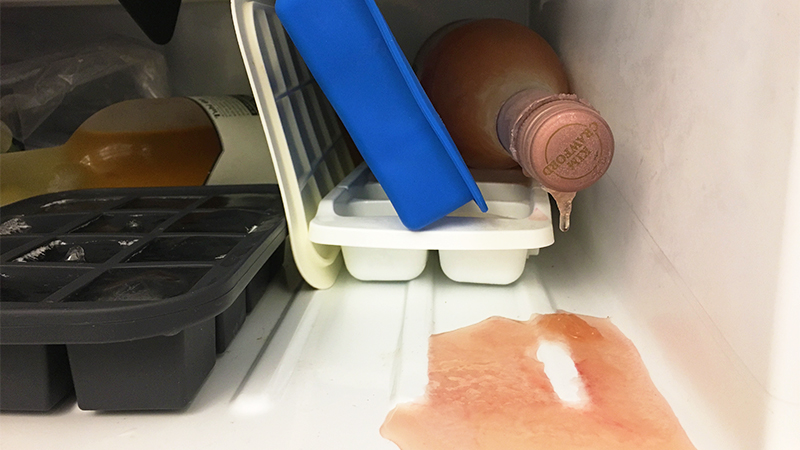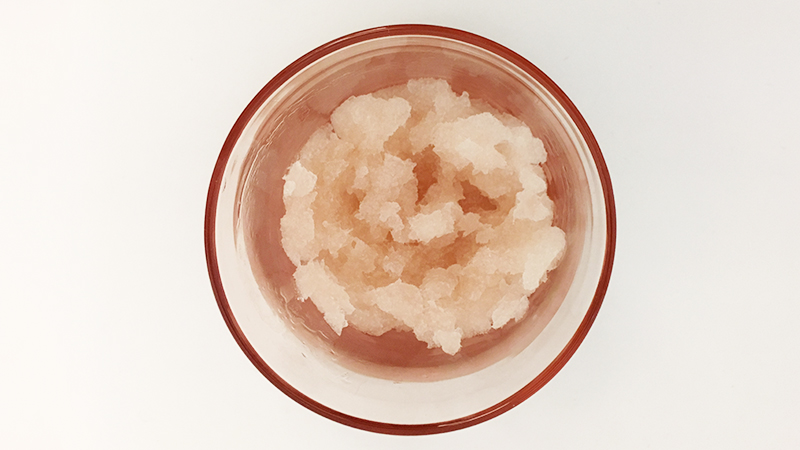It’s Friday night and your friends are coming over but you forgot to put wine in the fridge before you left for work. At this moment in time, it is a gross room temperature. You rush to put a bottle of rosé in the freezer, hoping it’ll chill in the two hours before they arrive. When your party gets there, however, multiple people also decided to bring wine and their wine is already chilled and ready to go, so these are the first bottles you pop. The night is saved — so much so that you forget about that bottle of wine you shoved in the freezer.
So what happens to the bottle now? Is it ruined forever, or does it remain drinkable for another day? VinePair did a test with two bottles of Kim Crawford rosé — we left one in the freezer overnight, and one in the refrigerator overnight — to see if that forgotten bottle is actually still drinkable (and if it is, how much worse does it tastes than the bottle that stayed in the fridge).
The Test
For this test, we used standard 750 milliliter screw-cap bottles of Kim Crawford rosé. One bottle went into a standard kitchen freezer at 5 p.m., and one bottle went into a standard kitchen refrigerator at 5 p.m.
We checked the freezer the following day at noon (we also checked the refrigerator, but we knew that would be O.K.). The bottle in the freezer had already busted the screw cap, and a small puddle of frozen rosé — raw frosé, if you will — had pooled below the bottle. The bottle had popped sometime over the past 18 hours, but we closed the freezer door again without touching it to simulate forgetting the bottle for a full day.
At 5 p.m., we removed both bottles. The bottle from the freezer was a solid mess. Slush oozed out of the top when we gently removed the screw cap, which had a leaking and broken seal. The wine from the fridge was, as expected, fine.
Using the back of a barspoon, we stirred enough slushified rosé out of the frozen bottle to fill half a water glass. We slurped some up with a spoon for a taste test before trying the refrigerated bottle.
The busted slushie from the bottle tasted bitter, and more watery when compared to the refrigerated bottle. It was also less fruity and less fresh tasting, the literal ice cold killing any nuance the wine originally had. After about an hour, the wine in the bottle had melted enough that only a small iceberg floated in the wine. Ten percent of the clear, flaky ice floated above a sea of pink, while 90 percent lurked underneath like it was trying to sink a ship in a bottle version of the Titanic.
After thawing, the rosé had a murkiness to it and still tasted noticeably off — less fruit, more bitterness — than the refrigerated version.
Case solved. Rosé that has seen a day inside a freezer is noticeably worse tasting than a rosé that is properly chilled.
Science Explains Why
Frozen wine that bursts through the airtight seal of a screw cap (or pushes a cork out of the bottle) can oxidize if left out for too long. If it’s a bottle of bubbly, however, the results are much worse than a less-tasteful bottle of wine. The bottle will actually explode, thanks to the wire cage holding the cork down.
For the everyday forgotten bottle of rosé, though, the results are far less dramatic.
When frozen, the wine tastes like a dumbed-down version of what it was intended to taste like. Low temperatures dull both desired flavors along with harsh alcohol flavors (think near-frozen vodka or tequila shots).
If the wine is left in the freezer for a long period of time, it becomes both freezer burned and oxidized. Air degrades the wine to a certain point, and then the cold takes care of the rest, until it’s just not worth drinking anymore (for the taste, at least).
Some wine is, however, subjected to similar conditions during the winemaking process. Cold stabilization will remove potassium bitartrate, which can make a wine unstable and create hard crystals in the bottle. Cold stabilization in California means 28 degrees Fahrenheit for 10 days, but it’s normally done to lower price-point wines, not high-end bottles. As Jordan Winery writes (and as we found out through our test), “very cold stabilization strips a wine of its aromas and flavors.”
TL;DR
Don’t put an expensive bottle in the freezer. If you forget a cheap bottle, let it thaw at room temperature and drink it knowing it’s a lesser version of what the wine was intended to be.


